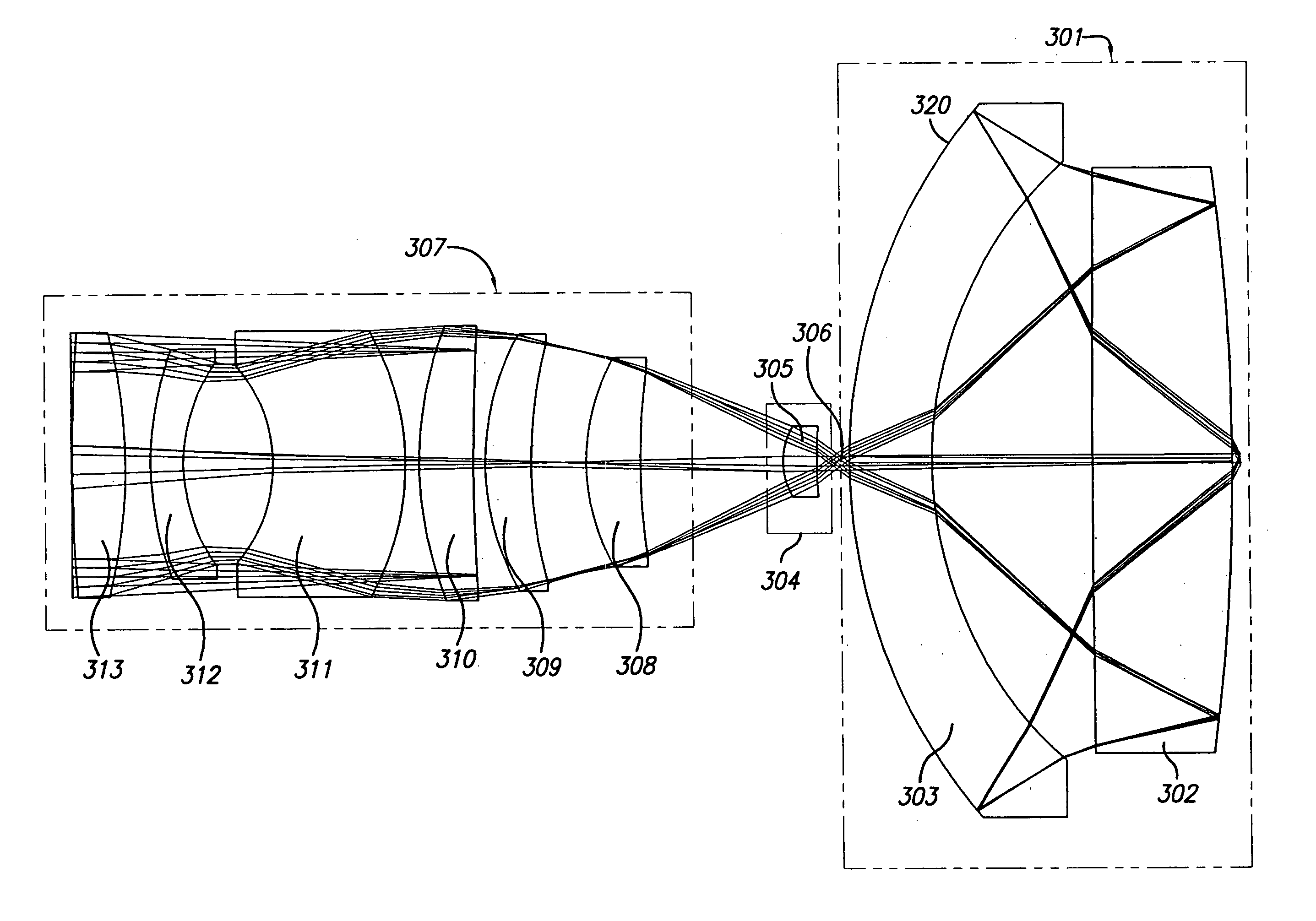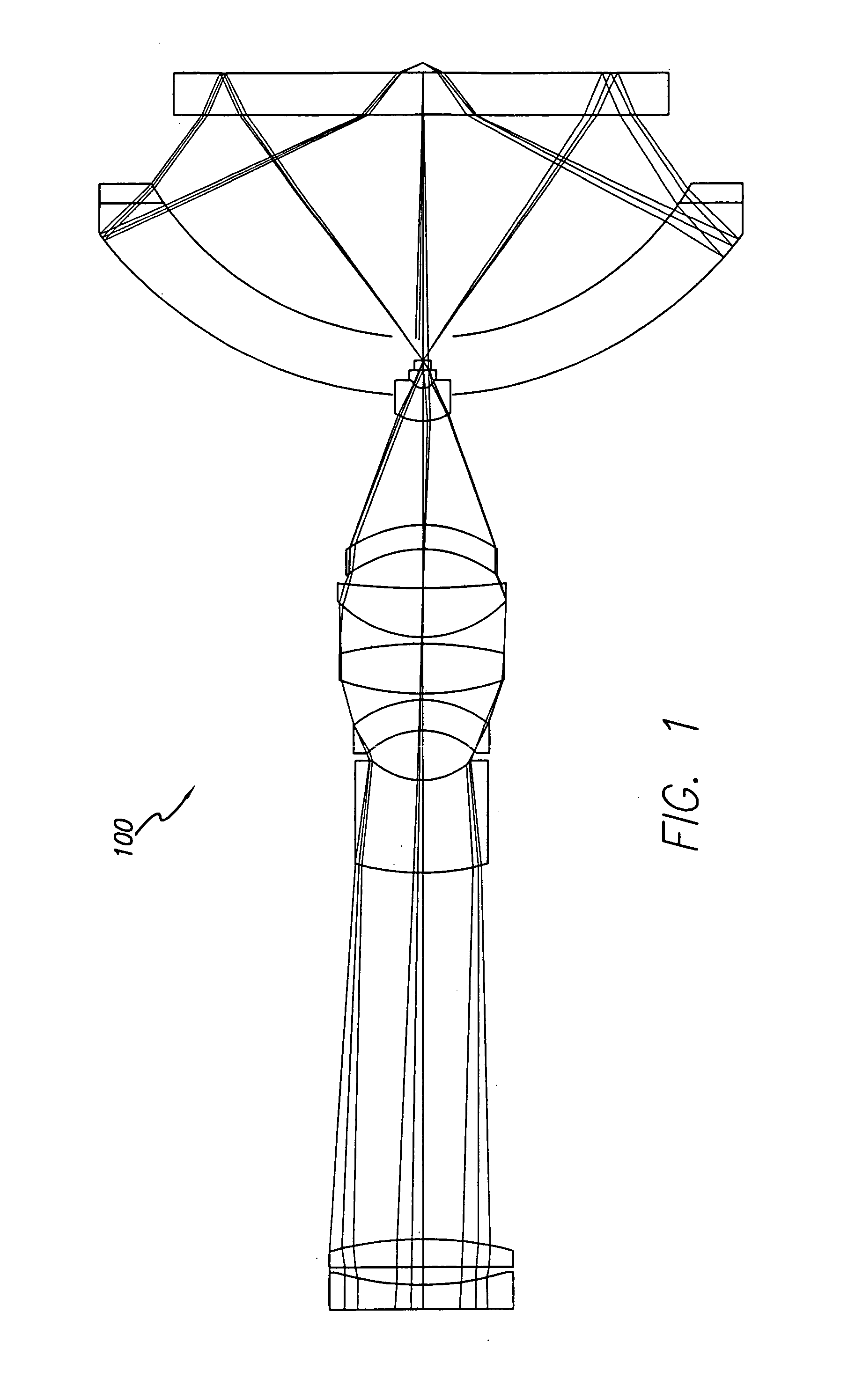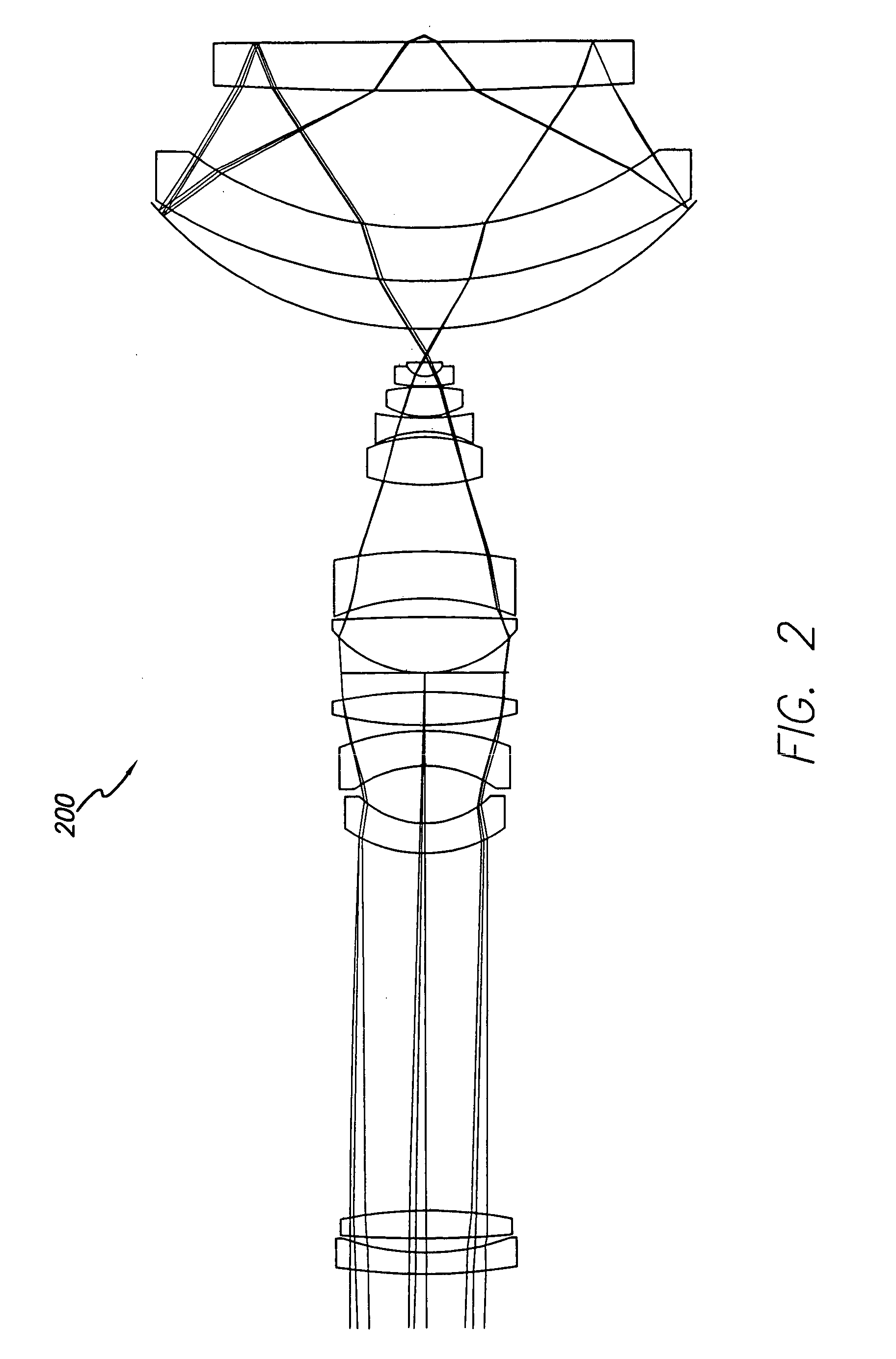High performance catadioptric imaging system
a catadioptric and optical system technology, applied in the field of optical imaging, can solve the problems of poor surface quality, difficult manufacturing and extremely expensive, and inability to meet the requirements of microlithography exposure,
- Summary
- Abstract
- Description
- Claims
- Application Information
AI Technical Summary
Benefits of technology
Problems solved by technology
Method used
Image
Examples
Embodiment Construction
[0032]According to the present invention, there is provided a catadioptric objective corrected over a wavelength range from 285–320 nm using a single glass material, or in certain circumstances, more than one glass material to improve performance. One aspect of the objective design is shown in FIG. 3. The catadioptric objective as shown in FIG. 3 is optimized for broad-band imaging in the UV spectral region, namely approximately 0.285 to 0.320 micron wavelengths. The objective provides relatively high numerical apertures and large object fields. The inventive design presented uses the Schupmann principle in combination with an Offner field lens to correct for axial color and first order lateral color. As shown in the aspect presented in FIG. 3, the field lens group 305 is slightly displaced from the intermediate image 306 to obtain enhanced performance.
[0033]From FIG. 3, the catadioptric group 301 or Mangin mirror arrangement includes a Mangin mirror element 302. Mangin mirror eleme...
PUM
| Property | Measurement | Unit |
|---|---|---|
| wavelength | aaaaa | aaaaa |
| diameter | aaaaa | aaaaa |
| size | aaaaa | aaaaa |
Abstract
Description
Claims
Application Information
 Login to View More
Login to View More - R&D
- Intellectual Property
- Life Sciences
- Materials
- Tech Scout
- Unparalleled Data Quality
- Higher Quality Content
- 60% Fewer Hallucinations
Browse by: Latest US Patents, China's latest patents, Technical Efficacy Thesaurus, Application Domain, Technology Topic, Popular Technical Reports.
© 2025 PatSnap. All rights reserved.Legal|Privacy policy|Modern Slavery Act Transparency Statement|Sitemap|About US| Contact US: help@patsnap.com



